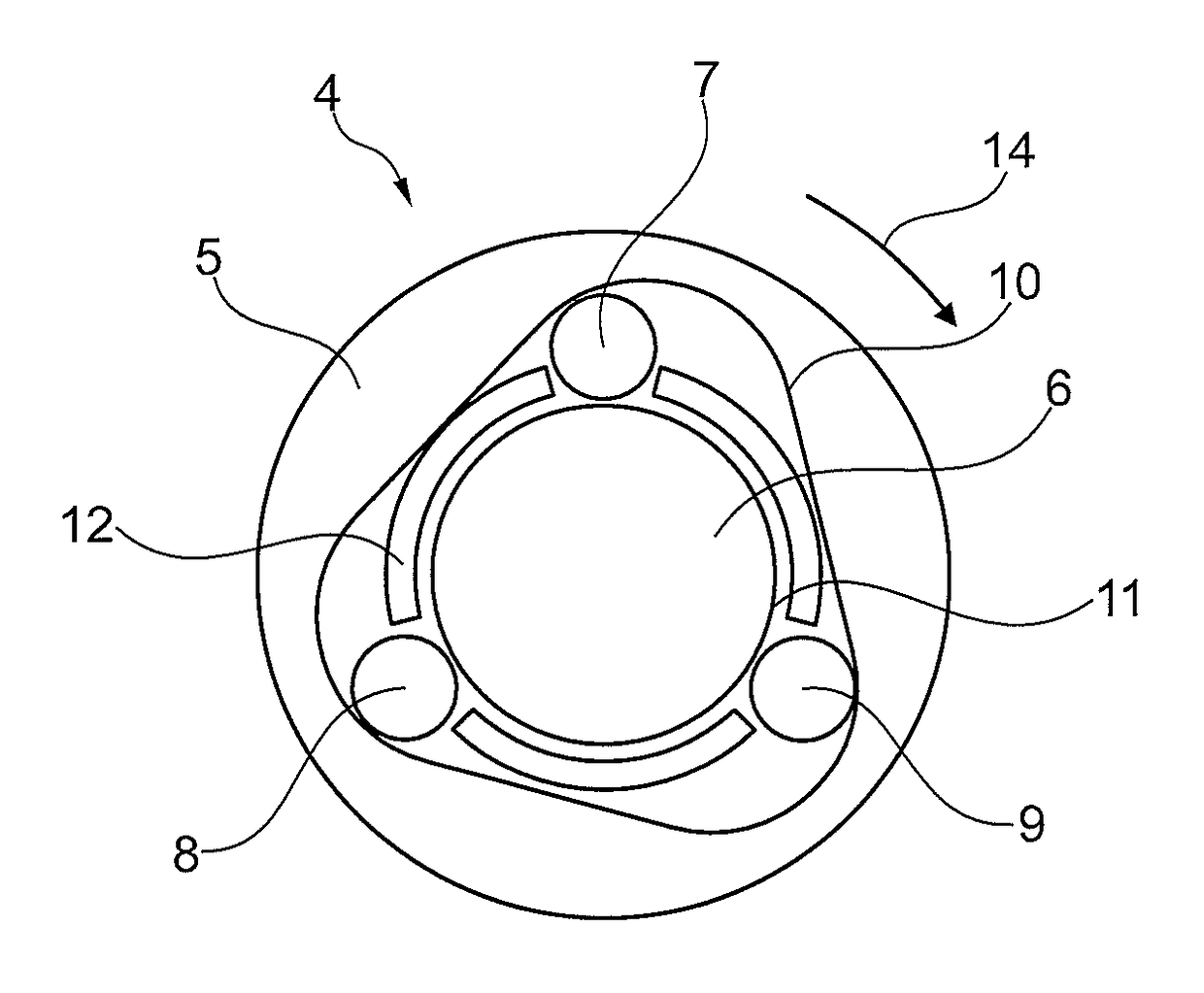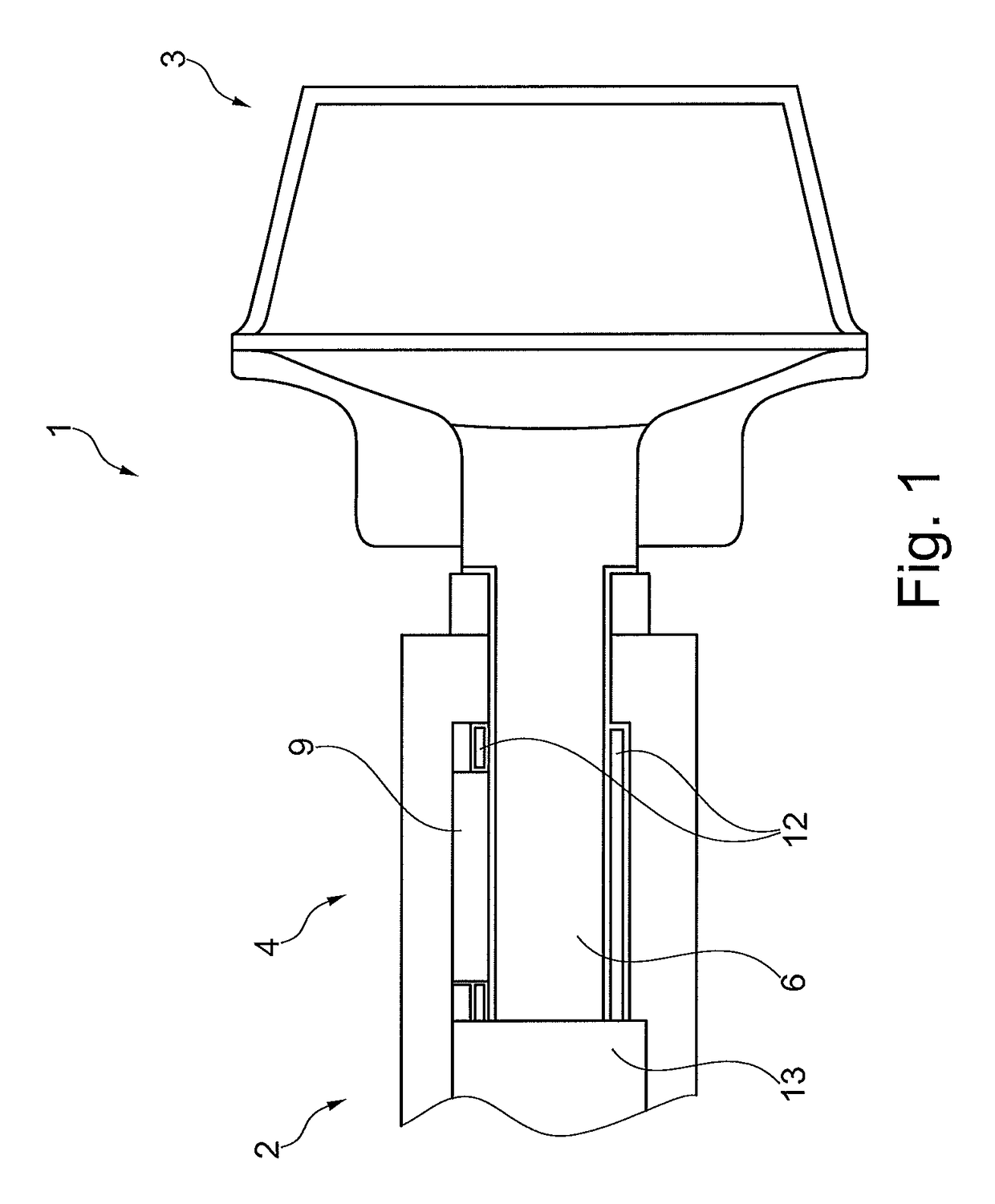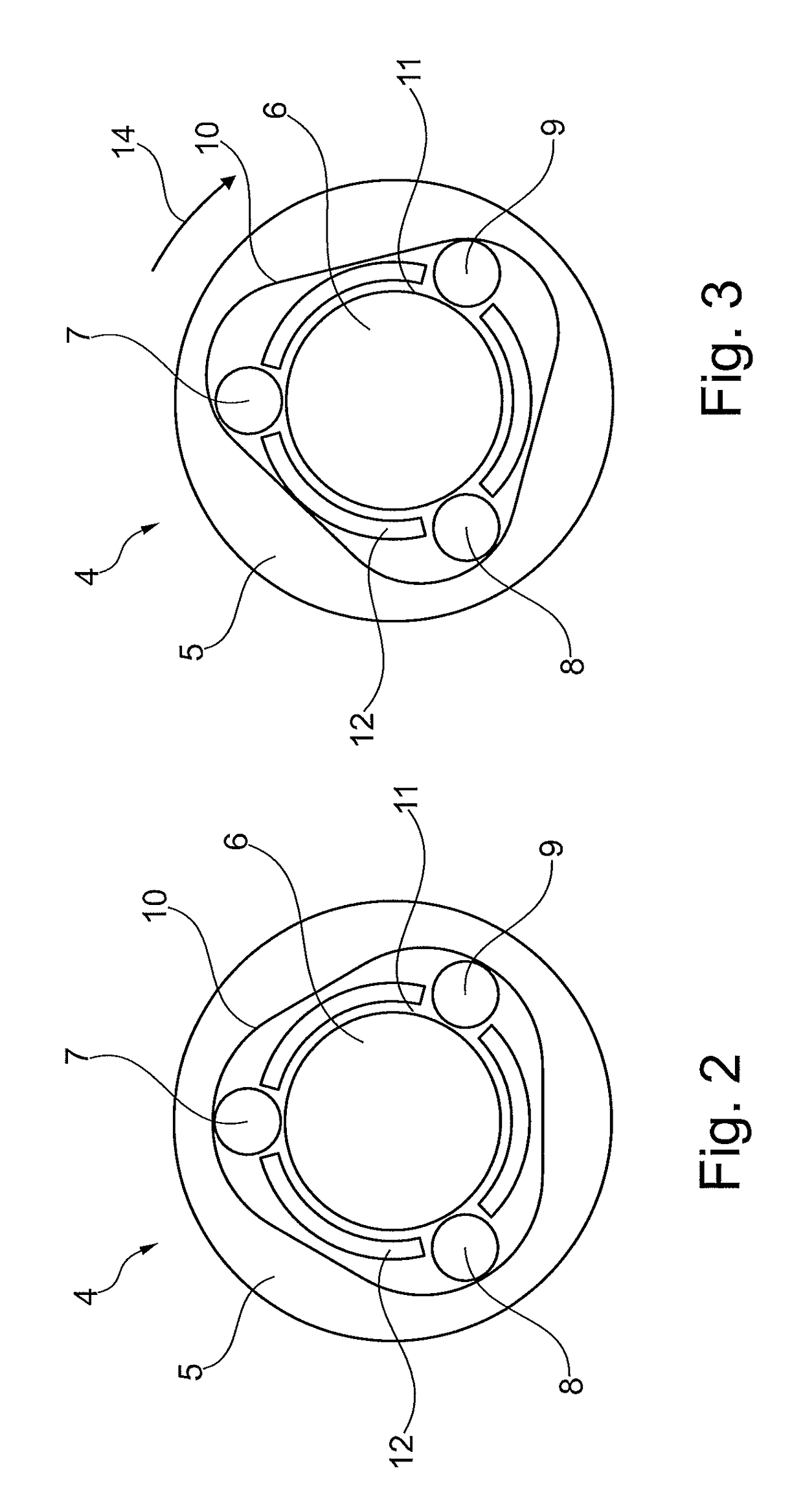Open-end spinning rotor
a technology of open-end spinning rotor and rotor shaft, which is applied in the direction of open-end spinning machines, mechanically actuated clutches, mechanical apparatus, etc., can solve the problems of damage to the drive and/or the mounting of the spinning rotor, the inability to play-free connection of this type, and the inability to exchange open-end spinning rotors. the effect of easy exchange and reliable centering of the rotor cup and the rotor sha
- Summary
- Abstract
- Description
- Claims
- Application Information
AI Technical Summary
Benefits of technology
Problems solved by technology
Method used
Image
Examples
Embodiment Construction
[0019]FIG. 1 shows an open-end spinning rotor 1 according to the invention. The open-end spinning rotor 1 has a rotor shaft 2. The rotor shaft 2 is driven by a drive device, not shown, preferably a single drive. The rotor cup 3 is releasably connected to the rotor shaft 2 by means of a coupling device 4. The rotor cup 3 can thus be exchanged in the case of wear or to spin a different type of yarn.
[0020]In the sectional view in FIG. 2, the coupling device 4 is shown in more detail. The coupling device 4 has a receiving element 5, an axle element 6 and three clamping bodies 7, 8, 9 configured as rolling bodies. In this case, the receiving element 5 is rigidly connected to the rotor shaft 2. The rotor shaft 2 and receiving element 5 may be configured in one piece here as one component or the receiving element 5 can be connected as an insert by a press fit to the rotor shaft 2. Accordingly, the axle element 6 is rigidly connected to the rotor cup 3. The clamping bodies 7, 8, 9 are arran...
PUM
| Property | Measurement | Unit |
|---|---|---|
| angle | aaaaa | aaaaa |
| drive torque | aaaaa | aaaaa |
| rotational speeds | aaaaa | aaaaa |
Abstract
Description
Claims
Application Information
 Login to View More
Login to View More - R&D
- Intellectual Property
- Life Sciences
- Materials
- Tech Scout
- Unparalleled Data Quality
- Higher Quality Content
- 60% Fewer Hallucinations
Browse by: Latest US Patents, China's latest patents, Technical Efficacy Thesaurus, Application Domain, Technology Topic, Popular Technical Reports.
© 2025 PatSnap. All rights reserved.Legal|Privacy policy|Modern Slavery Act Transparency Statement|Sitemap|About US| Contact US: help@patsnap.com



